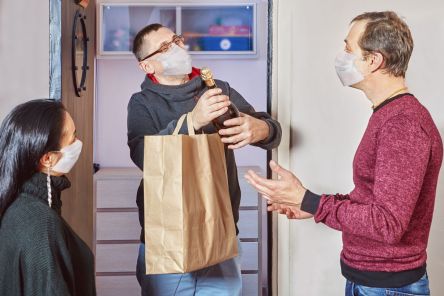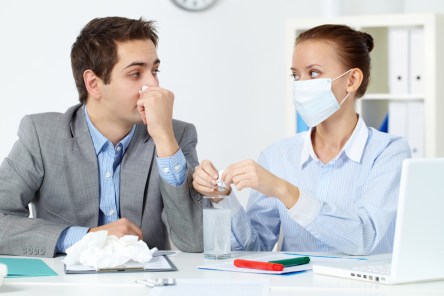As public health restrictions lift, many homes are welcoming loved ones, guests and clients again. The influx of visitors may have you second guessing your renters insurance policy. If you’ve wondered if you’re liable for COVID-19 transmitted while in your rental, read on. What is the “liability” part of your renters policy? Liability insurance is a specific field of coverage on your renters insurance policy. It protects you, the purchaser, from the risk of liability resulting from legal action. Such legal action may pertain to bodily injury or property damage that guests experience while at your home. When we think about liability insurance for rentals, slips and falls come to mind. If someone delivers a mattress to your house, trips and falls over an extension cord in the hallway, that’s a matter for your liability insurance. But what happens when the threat is unseen? Hundreds of flu seasons have come and gone since the advent of renters insurance. Few people, however, considered their liability if someone contracts an infectious disease while in their rental. Infectious diseases such as the common cold, flu and COVID-19 may cause bodily harm, but they are treated differently under liability insurance provisions. The liability of disease is a contentious topic: to what degree can a property owner or tenant protect occupants and guests? What measures are they required to take, legally or ethically? How precisely could guests pinpoint the exposure to the rental? Answers will vary, but for nearly all renters, your liability is limited. The majority of liability clauses in renters insurance policies contain virus and pathogen exclusions. This includes liability, loss of use and personal harm due to exposure to a virus. Consider these CDC guidelines for guests visiting your community. Does remote work influence my liability...
Fact or Fiction?
Cold + Flu Season
It’s that time of year when your team members may start dropping like flies. Coughing, sneezing, headaches, body aches, and congestion—the list of symptoms in the PTO requests may be endless. Revealing the truth behind these common cold and flu myths may help you run a full ship this season instead of surviving on a skeleton crew. At Yardi, we are thrilled to create software that boosts productivity and efficiency. But even the best real estate software on the market is less effective when clients work with a depleted staff. Keep your operations moving smoothly with these tested truths for a healthier workplace. Fact or Fiction? After the First 3 Days of a Cold, Safely Return to Work: FICTION A publication by the University of California, Berkeley explains, “As a general rule, adults with a cold will be able to infect others one day before symptoms appear and up to five days or so after becoming sick. […] The precise number of days for transmission can vary from person to person.” It is in the best interest of everyone at the office when a sick person takes adequate time out to recover from an illness. This personal time off minimizes the spread of the illness and supports long-term productivity. If personal time off is not an option, self-imposed quarantining may actually prove effective. “If you’re around someone who is sick, stay at least six feet away—cold viruses can’t be propelled much farther than that before falling to the ground,” the publication states. Immediately clean any shared surfaces after use and frequently wash hands with soap and water. Fact or Fiction? Hand Sanitizer Creates Resistant Germs: FACT Viruses and bacteria naturally evolve. Antimicrobials are not the sole catalysts for “super germs” but they are a...


